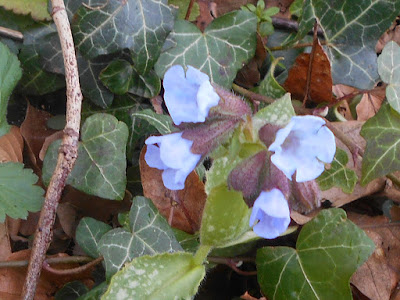The taxonomy of these shrubs is very confused and their relationships are still being tweaked by botanists as further investigations are made into the group's genetics. Photinia was once included within the genus Stranvaesia, itself a confusing name, being a pedantic Latinisation of the name Strangeways, the genus being named after William Fox-Strangeways, 4th Earl of Ilchester. A few decades ago Photinia was controversially separated from Stranvaesia but recent research has confirmed that the move was largely justified.
 |
| Photinia 'Red Robin'. Stefen Hill, Daventry. 30 March, 2020 |
Photinia and Stranvaesia are members of the Rose family, Rosaceae, and produce clusters of creamy-white flowers vaguely like some hawthorns. Where Photinia is grown as a hedge these flowers rarely appear, being ruthlessly clipped off. Although nowadays Photinia is primarily grown for its young foliage this was not always the case. To quote from that invaluable work, 'Hilliers' Manual of Trees and Shrubs', "The globular, brilliant crimson fruit are carried in conspicuous, pendent (sic) bunches all along the branches".
 |
| Perhaps other species of Photinia should be more widely grown. This is Photinia (Stranvaesia) davidiana. Photo courtesy of Wikipedia. |
There are a number of Photinia species but, other than the ubiquitous 'Red Robin' other members of the genus are rarely encountered outside botanic gardens.
Note Writing a blog like this is what happens when you're cooped up!











































